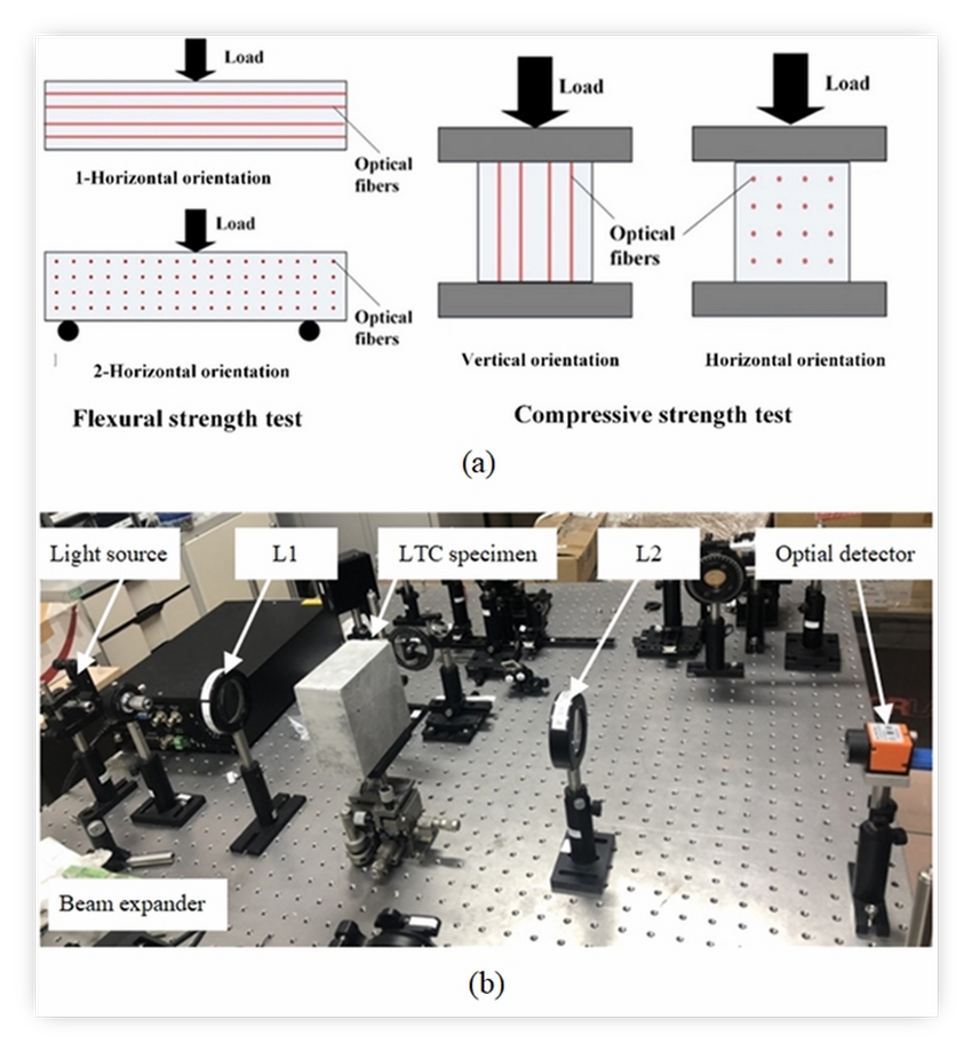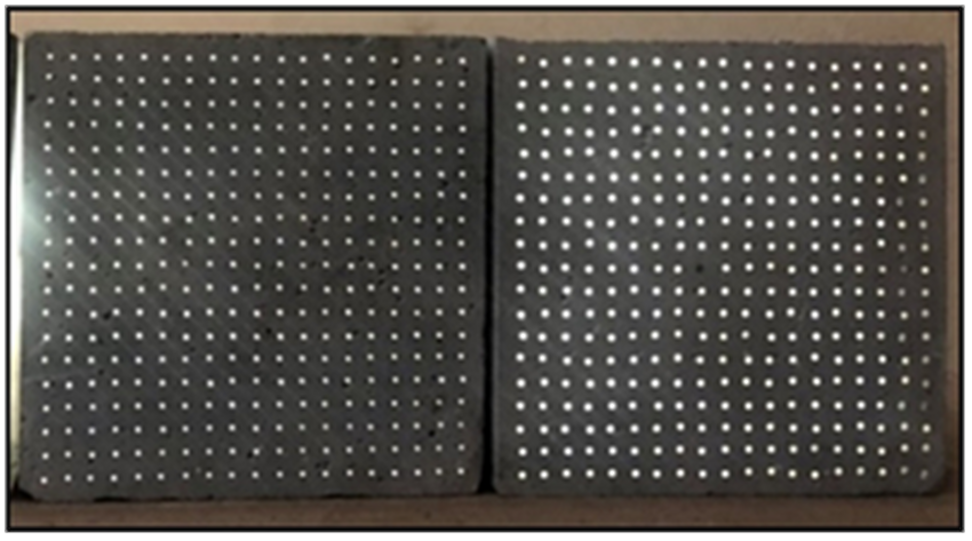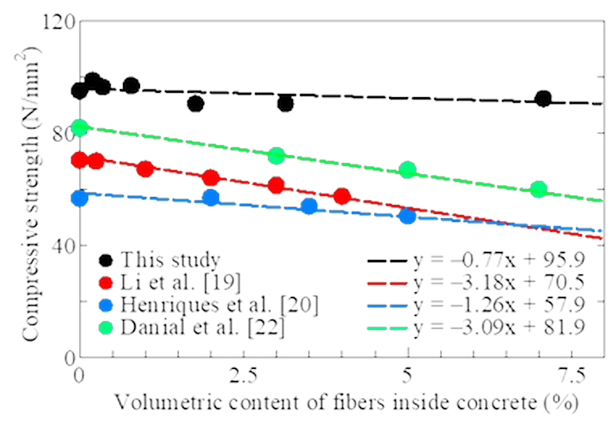Research and test light-transparent concrete applications to save energy in construction works
Research publication information:
- Title: Experimental study on 80 MPa grade light transmitting concrete with high content of optical fibers and eco-friendly raw materials
- Journal name: Case Studies in construction Materials
Information about the research team:
- First author: Dr. Huynh Phuong Nam (University of Danang)
- Main author: Dr. Nguyen Minh Hai (Lecturer of University of Science and Technology - University of Danang)
- Co-author: Assoc.Prof.Dr. Nguyen Van Huong (Lecturer, University of Science and Technology-UD), Dr. Pham Duc Quang (Lecturer, Vietnam National University, Hanoi), MSc Nguyen Duc Tuan (Lecturer, University of Science and Technology-UD), PhD. Do Viet Hai (Lecturer, University of Science and Technology-UD), KS. Nguyen Thanh Binh (Alumni of University of Science and Technology-UD), KS. Tran Quang Vy (Alumni, University of Science and Technology-UD)
The research team consisting of lecturers from University of Science and Technology - University of Danang, Vietnam National University, Hanoi and Engineers who are Alumni of University of Science and Technology, UD has successfully tested transparent concrete. has high practical applicability in the field of construction. The work has been published in a scientific article in the prestigious international journal Case Studies in Construction Materials.
“Development of building materials capable of transmitting light will increase the choice for design engineers when they want to optimize the functions of the building”
Sharing about the research purpose, practical application significance of the research of transparent concrete, Dr. Nguyen Minh Hai - Lecturer of the Faculty of Bridge and Road Construction, University of Science and Technology, University of Danang, representative of the research team said:
“With the current rapid urbanization rate, the energy consumption for artificial lighting in civil works and infrastructure increases, causing significant impacts on the environment. In addition, the needs and criteria for building aesthetics are also being valued. Therefore, solutions to get natural light into civil works (especially adjacent tube houses...), infrastructure (tunnels, road signal indications...), along with creating Creating novel architectural effects is a topic of interest to many leading scientists and construction corporations. Besides architectural solutions, the development of building materials capable of transmitting light is indispensable. Currently, glass, mirror and transparent plastic materials are considered as mainstream materials. However, glass materials also have certain disadvantages such as: the light intensity through the glass is too great, leading to inconveniences when working or living directly under the glass, mechanical strength under impact. , the wind storm of glass is not high, the cost is relatively high.... Therefore, the research and development of parallel solutions will increase the choice for design engineers when they want to optimize the works. function of the building, in terms of aesthetics, in terms of environmental friendliness, insulation ..."

Dr. Nguyen Minh Hai said: In the world, research on light pipes or light-transparent concrete and light-transparent bricks has been very interested in the last 1.2 decades. Light transmitting concrete is one such solution. The simple principle of this material is to arrange optical fibers (fibers capable of transmitting light) inside the concrete to help the concrete have the ability to transmit natural or artificial light. Although this type of material has been researched since the early 2000s, and has been used as a pilot in a number of projects, it does not seem to have been widely applied as expected.
There are many reasons, but one big reason is that "current techniques have not optimized the concrete mix to balance the two basic functions of light transmission and mechanical strength when this material is produced in the form of thin sheets”. That is, to increase light transmission, we arrange more optical fibers, but the more optical fibers are arranged, the lower the strength of the concrete will be. Therefore, it is not possible to produce this material in the form of thin sheets with high fiber density. This is very important in the application and cost optimization in production later.
With such a problem, the research team focused on experimenting to optimize the grade of the concrete with the goal of developing high-strength transparent concrete (over 80 Mpa) while still ensuring the ability to its light transmission capacity (i.e. when the optical fiber is arranged with high density). This is the premise for the development of thin transparent concrete panels later, thereby reducing costs and increasing the applicability of this material.

The results of a study that required expertise in materials, architecture, infrastructure and optics created an important premise for the production of thinner transparent concrete slabs.
The biggest result obtained by the research is the development of a concrete mix that has both very high ductility, a solid structure after curing, and high adhesion to optical fibers. This helps to develop a balanced concrete with high strength (over 80Mpa) with a high fiber density of 7.1% while research on this material currently stops at strength level. 40-65Mpa when the maximum fiber density is 5%. This is an important premise for the production of thinner and brighter concrete slabs in the future. In addition, some results on light transmittance, structural observations, ... also create a database for future research.

Orientation to continue researching and testing before applying it to real projects
After testing and getting current results, Dr. Nguyen Minh Hai - Representative of the research team said that there are still some features that the research team has not tested yet. For example, permeability, heat resistance, durability over time ... of this material. In addition, the team wants to increase the fiber density to 20% of the surface area for a more effective light solution. After clarifying the top of the problem, it will take into account the trial production and apply in the actual work.
University of Science and Technology, University of Danang is the leading prestigious scientific research and technology transfer center in the Central region - Central Highlands. This importation and technology transfer activity is interested and focused on promoting by both lecturers and students. Many researches of both lecturers and students are recognized by society and applied to real life. With "Research on testing light-transparent concrete at 80 MPa level, high fiber content, environmentally friendly materials", it is hoped that the research team of the lecturers of the University of Science and Technology - the University of Danang, Hanoi National University and engineers who are alumni of the University of Technology, UD will bring the expected results and put them into practice one day in the near future.

 English
English
 Tiếng Việt
Tiếng Việt
